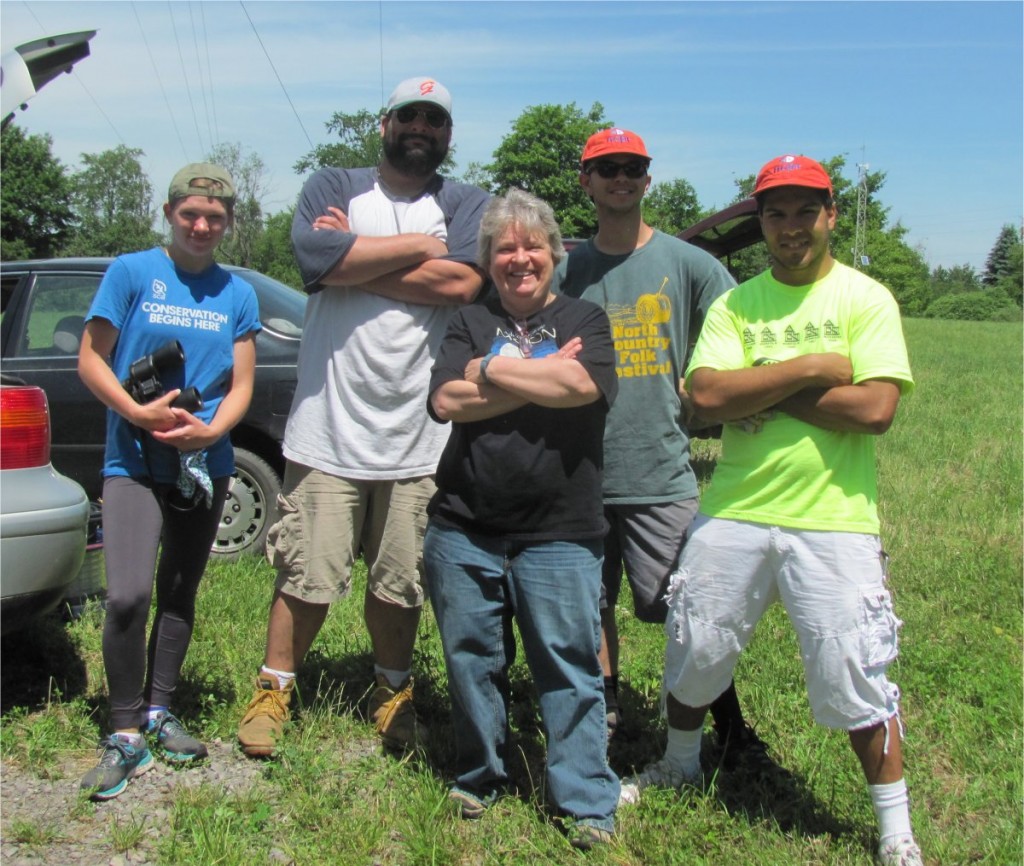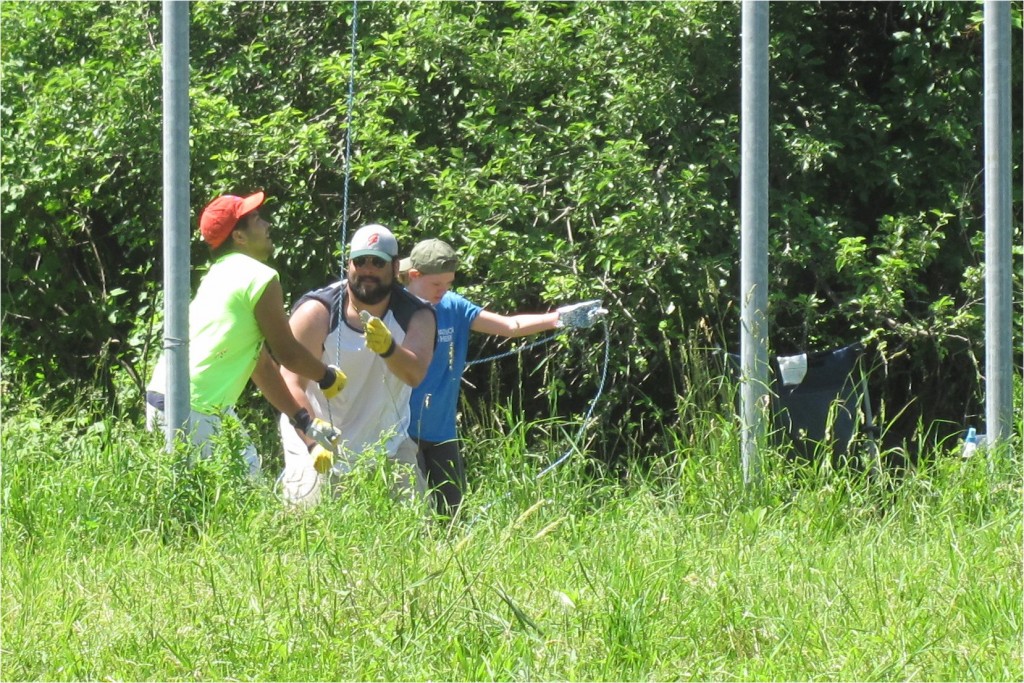NCPR and the changing of the bulb
How many NCPR staffers does it take to screw in a light bulb, you ask? No less than three, plus astronomer and physics professor Aileen O’Donoghue to explain how everything works, a few St. Lawrence University grads, and a professional to climb the tower and set up a huge (and really cool) pulley system.
Every decade or so, the LED light at the top of NCPR’s radio tower in Russell (about five miles from the station in Canton) needs to be replaced. At night, the light warns planes of the tower. During the day, the white and orange stripes painted on the tower do the same job.
When NCPR development coordinator Jon Sklaroff, Radio Bob, and I first headed out to the tower on Monday, we thought that we were all the ground crew that Carl, our climber and engineer, would need to replace the bulb at the top of our 320-foot tower. How very wrong we were. This is a true story that, much like “Indiana Jones and the Last Crusade,” involves snakes (“why did it have to be snakes?“), adventure, and danger. (Spoiler: no interns were harmed in the changing of the bulb).
On Monday, we optimistically set out at noon. After Carl climbed the tower, the ground crew (Bob, Jon and me) promptly tangled the ropes for the pulley system together and spent about an hour untangling them before sending up Carl’s toolbox. Then we
determined that the light was definitely broken. Then it started to rain and when we determined that a thunderstorm was coming in. Radio Bob made a tough call and we vowed to finish the job, at any cost (actually, not really, just as long as the weather was nice and Carl could stay an extra day and help us out.)
By now you’re probably wondering about the snakes. They live inside the building where the transmitters are housed and they look very well fed. We have no idea how dangerous they are (except that they are Garter snakes, but they could be very aggressive). So basically, every time Radio Bob entered the building and shut off the transmitters to avoid microwaving Carl (the reason you may have had a hard time listening to Fresh Air on Tuesday) he risked his life against a horde of snakes. Thanks Radio Bob.
On Tuesday, we rose at dawn. Actually, we met at the tower at 9. Danny Lobo and Joshin Atone, two SLU grads living in Canton for the summer, helped us not tangle the ropes this time. The bulb mounted on the top looks like the size of a football from the ground, but it actually weighs about 40 or 50 pounds, and that feels pretty heavy when you’re hauling it up from the ground. After a lot of pulling by Danny and Jon, which was probably comparable to that time the Egyptians put the last giant brick on the top of a pyramid, we finally got the new light to the top of the tower.
Planes above Canton are safe once again. However, there are still snakes in the transmitter building, if anyone wants to volunteer to deal with that.
Update: Nora here! Sadly, I just ran into Bob in the hallway, and he tells me the new light doesn’t work. He’s currently testing the old light to see if that one’s OK, and determine if the new one is a dud. There are great feelings of annoyance about the office.
Natalie Dignam’s internship at NCPR is supported by the Stan Macdonald Journalism Fund











The garter snakes are NOT poisonous, and their teeth are super small, but their saliva does contain a potent anti coagulant. A big garter snake may be able to open it’s mouth big enough to get some small human bit in there, and the resulting tiny slash won’t really hurt at all, but will bleed and bleed. It’s a little bit alarming, but probably not dangerous.
Have fun!
You didn’t put the bad one back in did you? I’ve done that before.